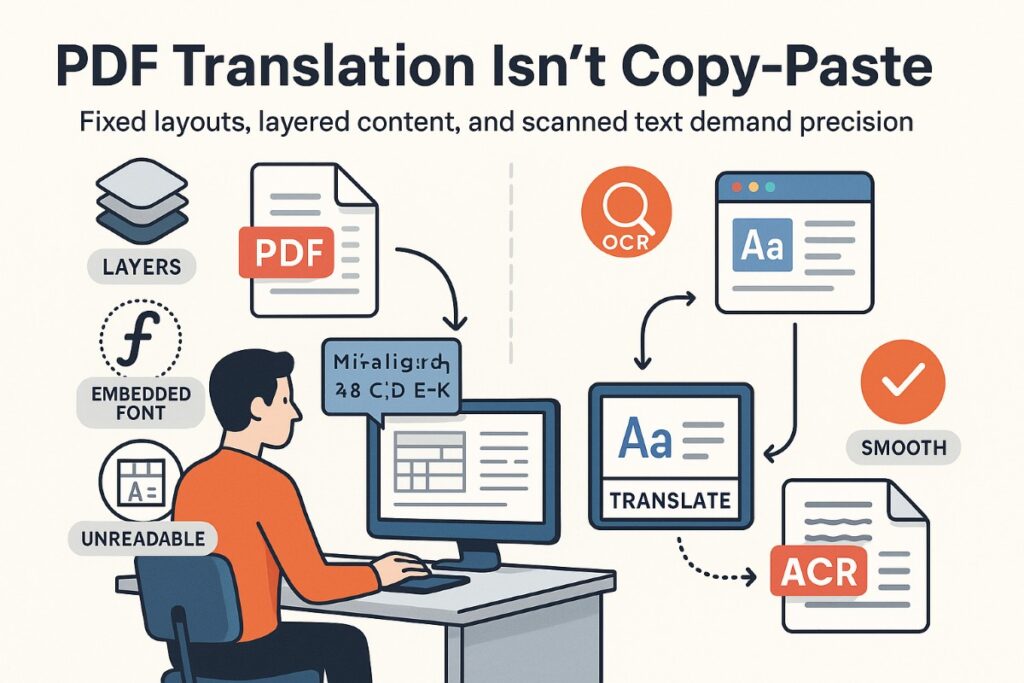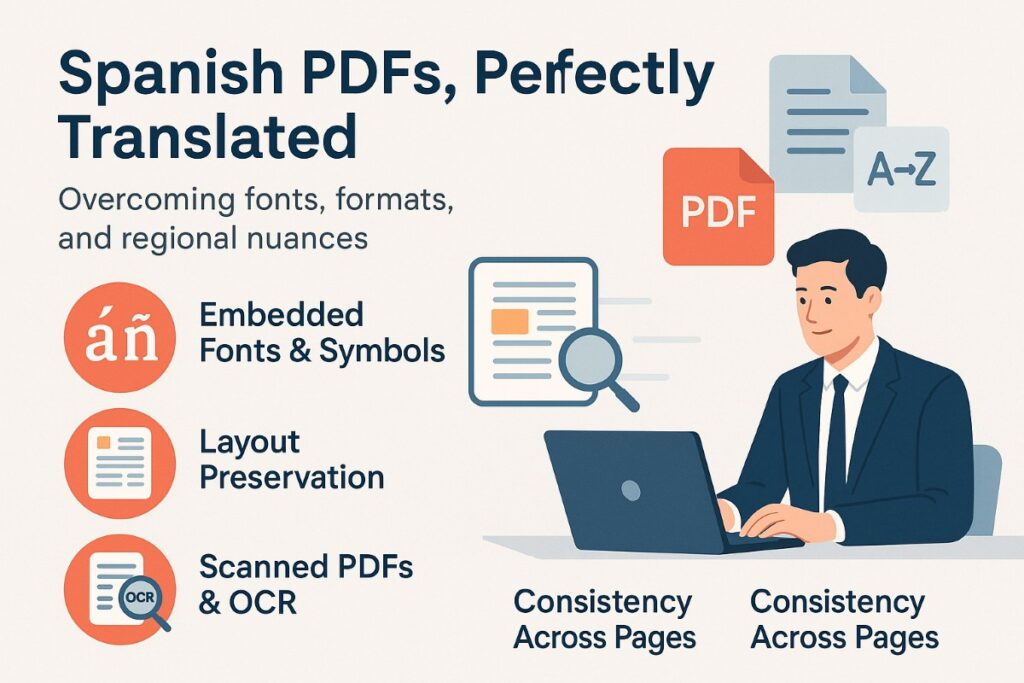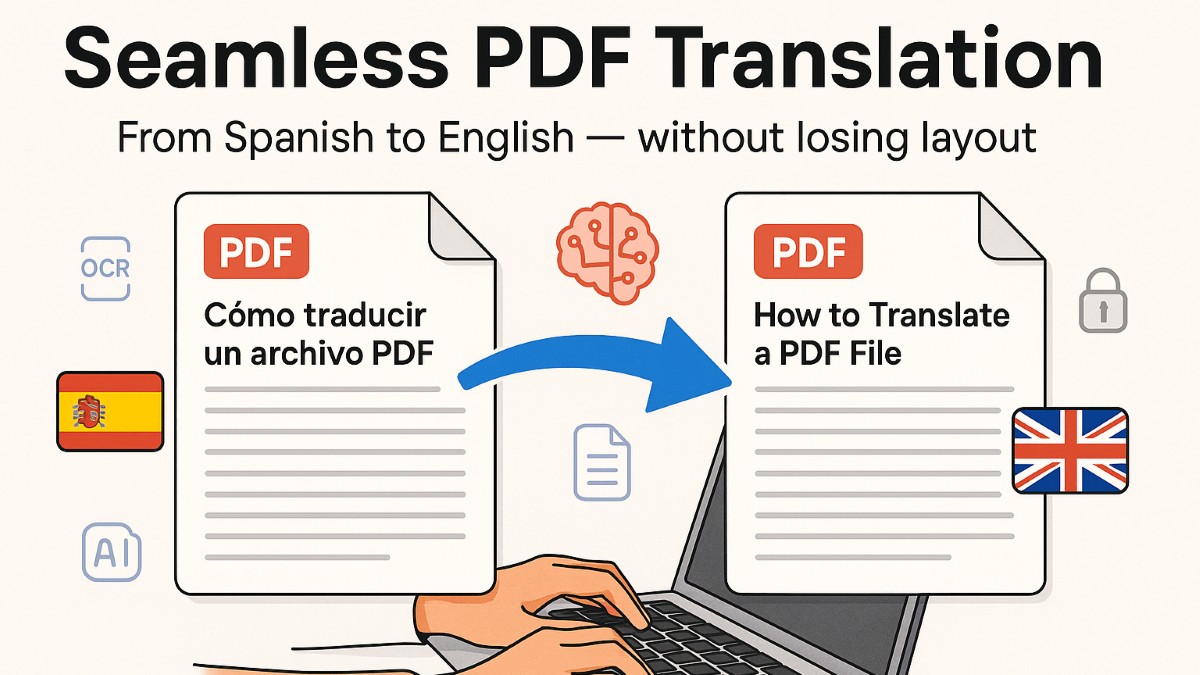Translating documents has become a standard part of global business workflows. Whether you're working with legal papers, marketing materials, or onboarding content, PDFs remain the most common format used to share structured, print-ready documents. But what if that content arrives in a language your team doesn't speak, like Spanish?
In such cases, you need a reliable PDF translator that can process the file accurately and efficiently, while maintaining the layout, fonts, tables, and visuals. This is especially important when working with customer-facing material or formal documentation that can't afford translation mistakes or format loss.
Why Translating PDFs Isn't Like Translating Web Pages

Unlike translating text on a website, translating a PDF file is not a simple copy-paste job. PDF files are designed to retain fixed formatting. They can contain layers, embedded fonts, tables, vector images, and scanned content - all of which complicate the translation process.
Traditional online translators, including browser plugins or basic language apps, are rarely effective for PDF files. They usually fail to preserve layout, misinterpret characters, or completely miss parts of scanned documents. This becomes a critical issue when dealing with multilingual workflows in industries like SaaS, healthcare, legal, or enterprise communications.
Challenges of Translating Spanish PDFs

Spanish-language documents often include accented characters, regional terminology, and formal tone variations depending on the country of origin (Spain, Mexico, Colombia, etc.). These nuances must be handled with accuracy to avoid confusion, especially when content is being shared with an English-speaking audience that expects professional-grade clarity.
Key Challenges Include:
- Handling embedded fonts or symbols unique to Spanish typesetting
- Recognizing and preserving headers, tables, and footnotes
- Dealing with scanned PDFs where text exists only as images
- Ensuring consistency across long documents or mixed-format sections
To address these problems, businesses are turning to browser-based PDF translation platforms that support full-document processing with OCR (Optical Character Recognition) and formatting retention.
How a Browser-Based PDF Translator Solves It
Modern platforms offer an integrated environment that lets you upload a Spanish-language PDF and receive a clean English version, with no layout loss, no file size restrictions (up to 1GB supported), and no need for desktop software.
The tool uses neural machine translation via Google Translate API, and includes OCR capabilities to convert image-based PDFs into editable, searchable, and translatable content. This is especially useful for scanned reports, certificates, and application forms, often received in Spanish.
Step-by-Step: Translating a PDF from Spanish to English
Here's how to process the document efficiently:
- Open the DocTranslator website in your browser
- Click "Translate Document" and upload your Spanish PDF
- Select "Spanish" as the source language and "English" as the target language
- The platform auto-detects layout and formatting, then runs AI-based translation
- Download the fully translated English version - layout, fonts, and structure remain intact
There's no software to install and no manual copy-pasting. The translation happens entirely in the cloud, so it works on any operating system - Windows, macOS, Linux, or ChromeOS.
Security, Compliance, and Automation
Security is a top concern when uploading sensitive documents for translation. DocTranslator addresses this by automatically deleting documents after processing. No file content is stored long-term, ensuring compliance with data protection standards like GDPR.
For CRM-driven businesses handling form submissions, client records, or signed agreements in Spanish, having an automated and secure way to convert these files to English can streamline onboarding, verification, and legal processing.
Final Thoughts
Translating a Spanish PDF to English doesn't need to involve formatting headaches or expensive manual services. With the right PDF translator, teams can convert full documents - including scanned ones - quickly, accurately, and with full structure preserved.
Platforms offer a powerful browser-based solution with OCR, AI-powered translation, and large file support. Whether you're in sales, compliance, development, or client support, the ability to localize PDF content without technical friction is now a competitive edge.




%201.png)

%201.png)

%201.png)

